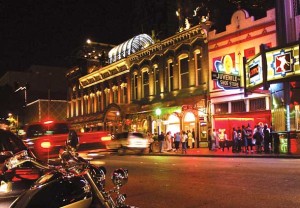When I get a chance to travel to other cities that can boast of robust downtown districts, I often think of the community I’ve called home for more than 21 years.
Amarillo is in the midst of a serious downtown revival. They’ve broken up some pavement, leveled some land, poured some slabs and begun erecting structures downtown.
More of it is on the way.
I just returned from a few days visiting my hometown, Portland, Ore. It’s gone through a decades-long downtown revival that’s still on-going. Heck, it might never end.
That city turned a moribund downtown district into a rousing, sometimes raucous place where people enjoy a robust night life and spend a little time and money shopping in retail establishments.
I’ve written about what I saw on my latest visit to Portland. However, I do not want anyone to presume that I believe what the Rose City has done can be replicated here on the Texas Tundra.
Portland’s municipal population is approaching 625,000 residents, with about 2.2 million folks living in a sprawling metropolitan area that covers several counties — and even reaches across the Columbia River into Washington state.
Amarillo’s population is just a shade less than 200,000, with a metro population nearly double that amount.
Do we have the resources here to replicate what other larger cities have done? No.
My intent in calling attention to what Portland has done, or what Oklahoma City or Fort Worth have done with their downtown districts, is remind us here in little ol’ Amarillo that we must think creatively.
All three of the cities I’ve mentioned — Portland, Fort Worth and OKC — have done so. Oklahoma City used a public investment tax to rebuild warehouse district into Bricktown; Fort Worth used some public/private investment in creating Sundance Square; Portland scrapped a planned highway project and redirected money into creating a robust downtown district.
Amarillo has developed a Strategic Action Plan that took form after years of public hearings and discussion. It, too, involves public and private money. Indeed, the vast majority of downtown Amarillo’s progress has occurred with private money. The city created a downtown Tax Increment Reinvestment Zone that uses money derived from increases in property value within that zone to help finance needed projects.
We’re thinking creatively here. That, I submit, is the first step in a long march toward revival.
Do the city, civic and business brain trusts think we can emulate dollar for dollar what bigger cities have done? I hope not.
They shouldn’t shy away from doing what they can, however, with what they have.
